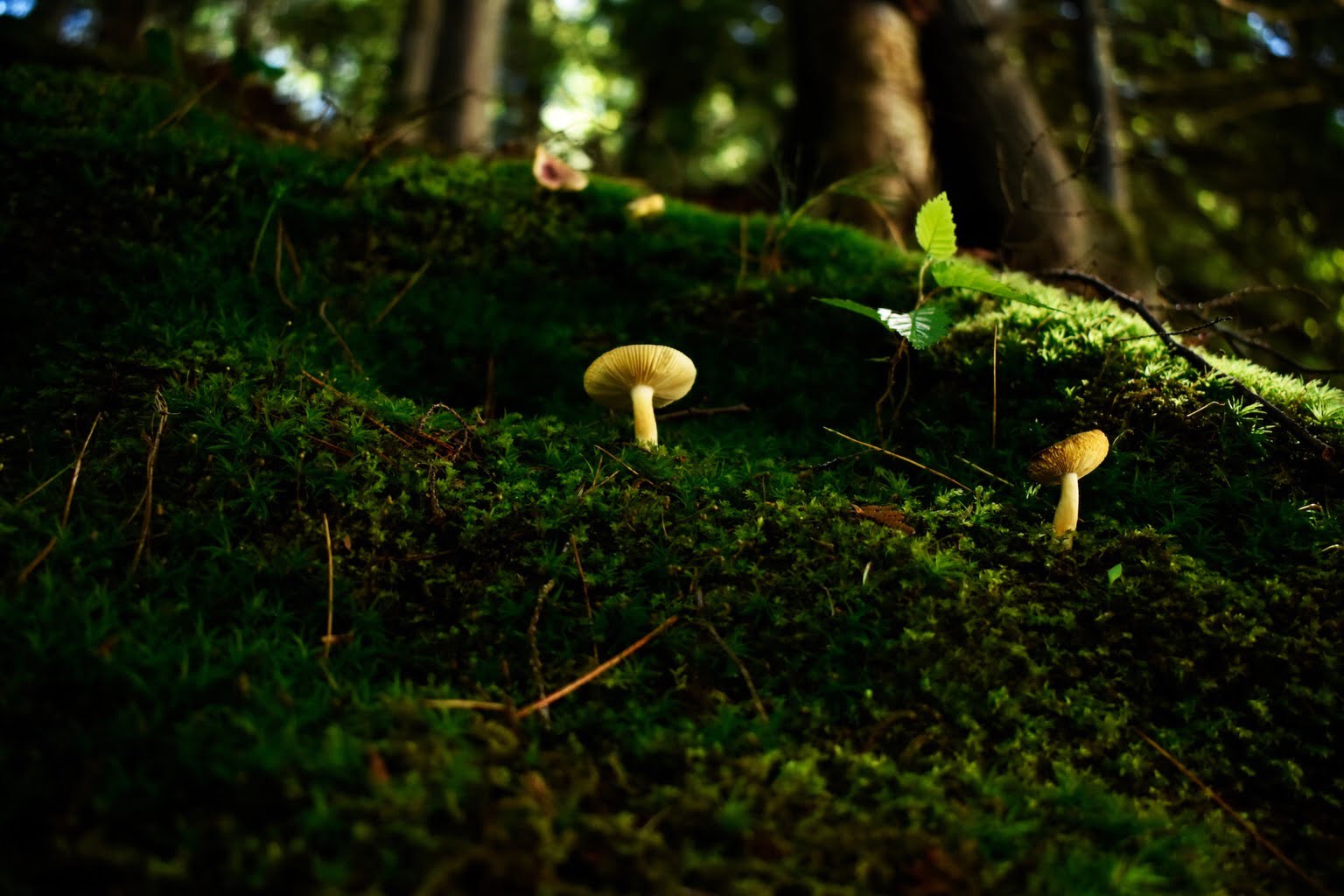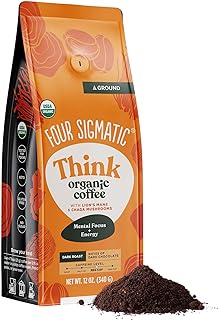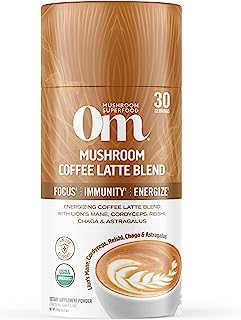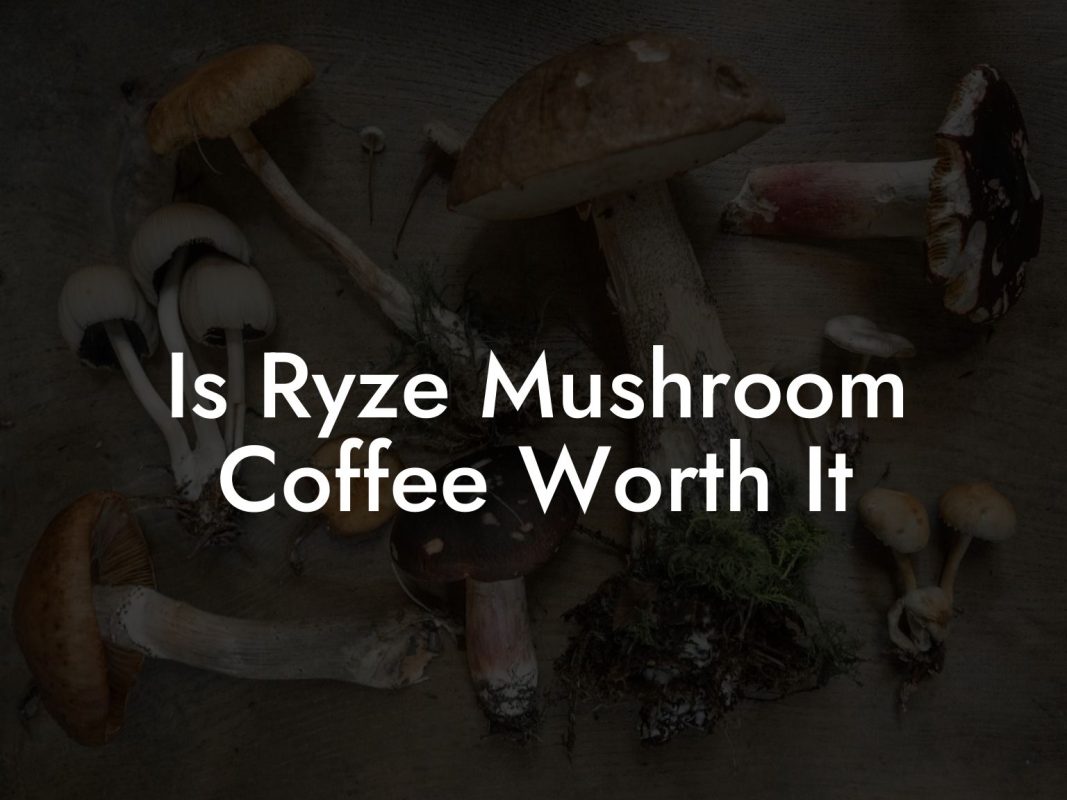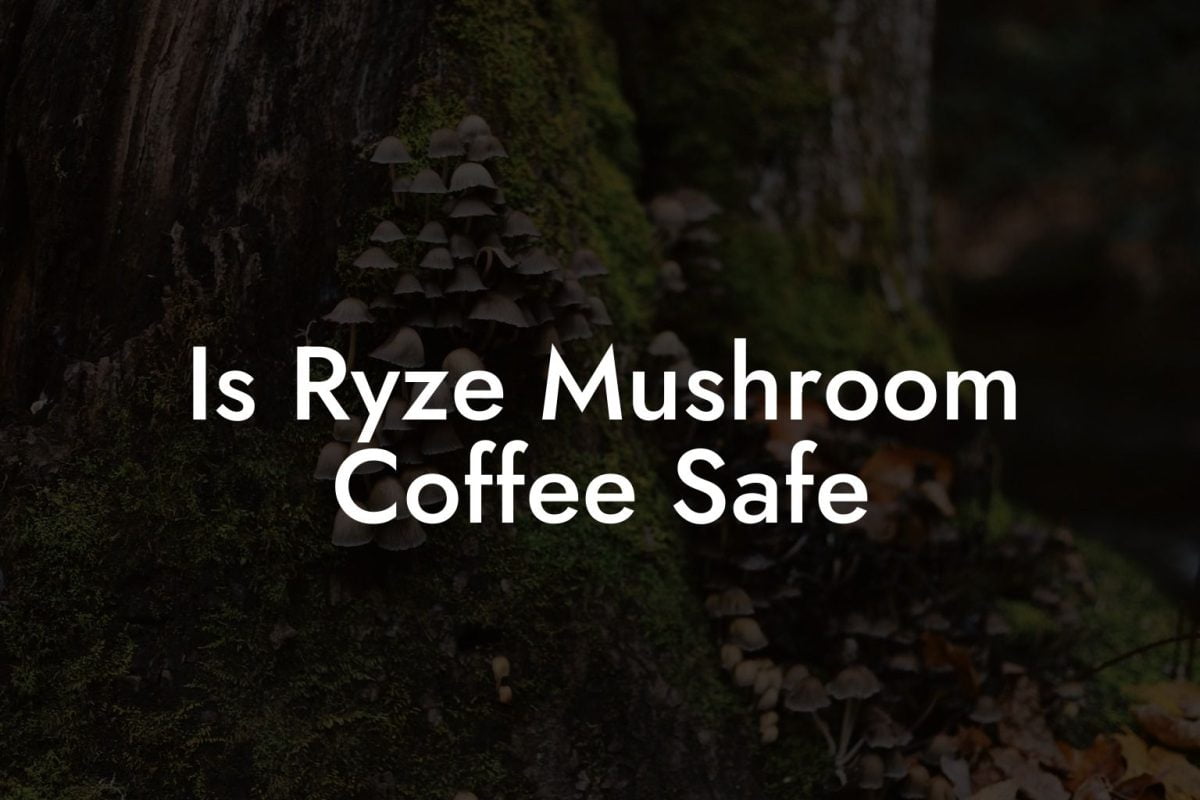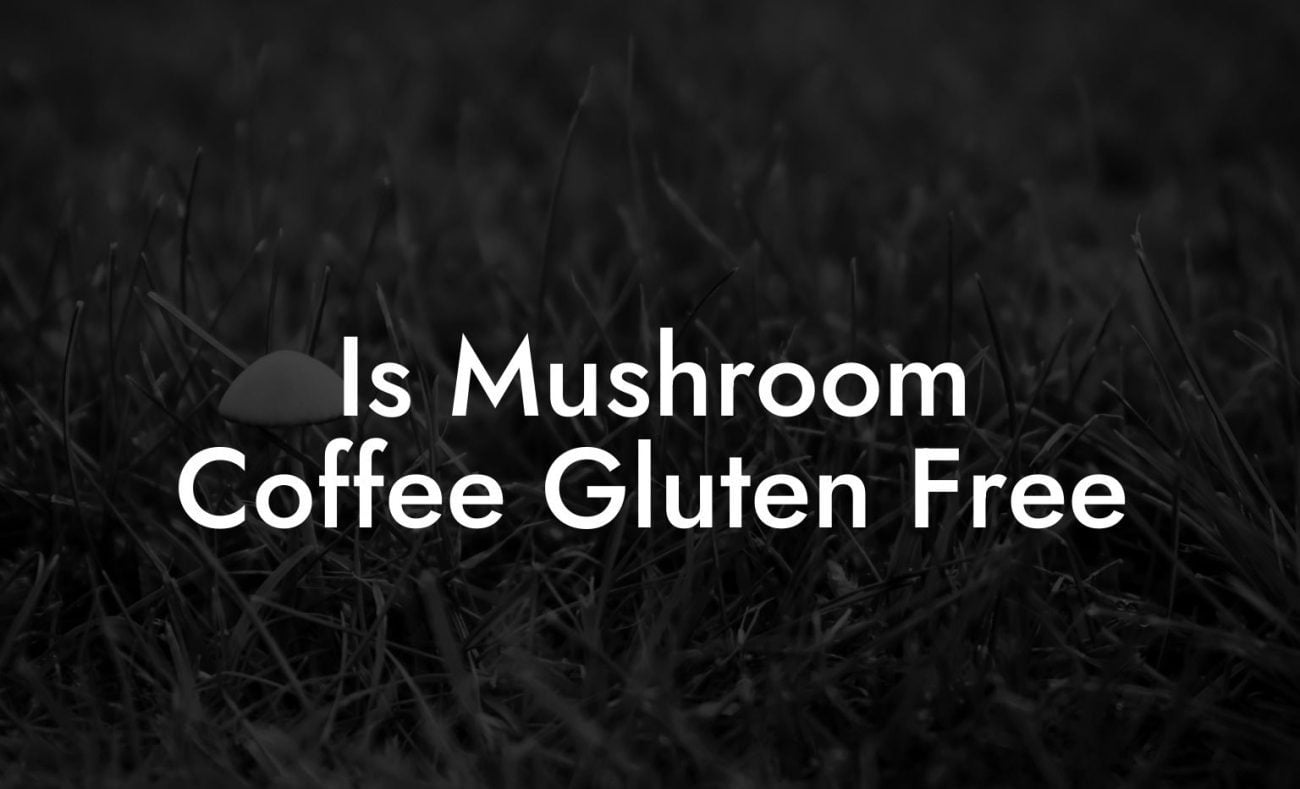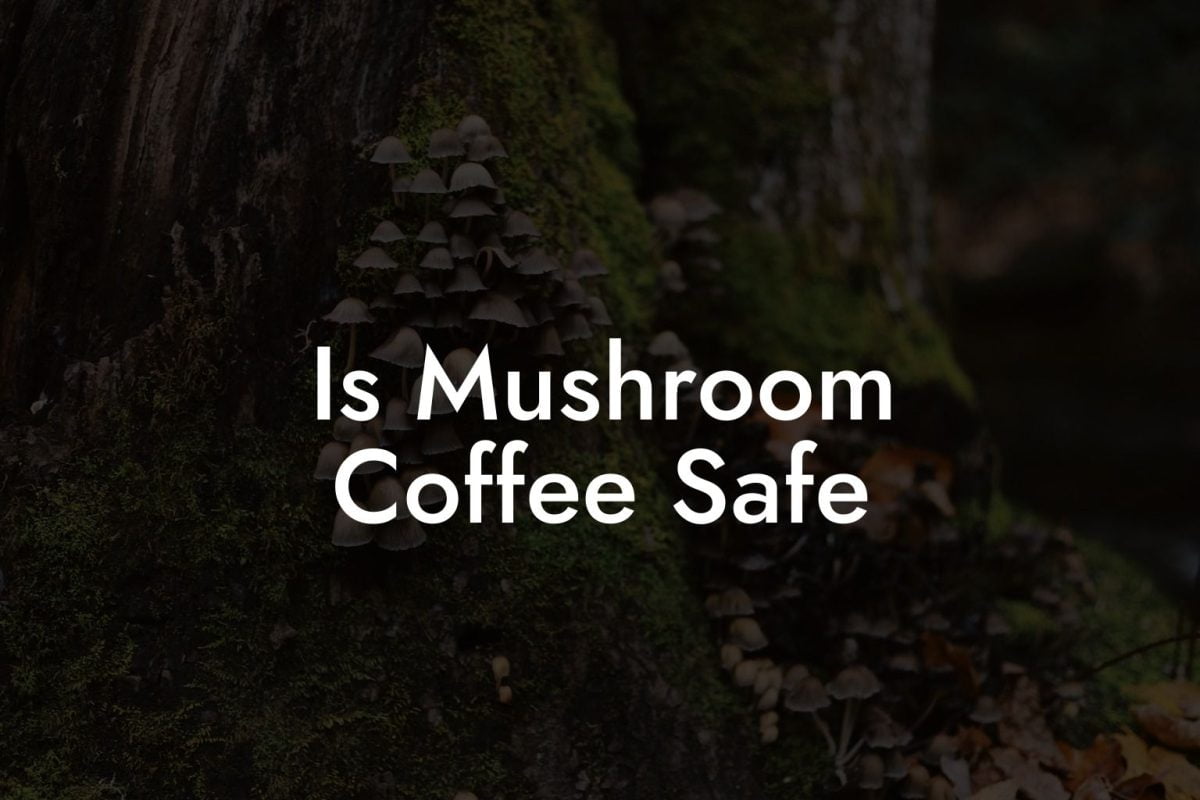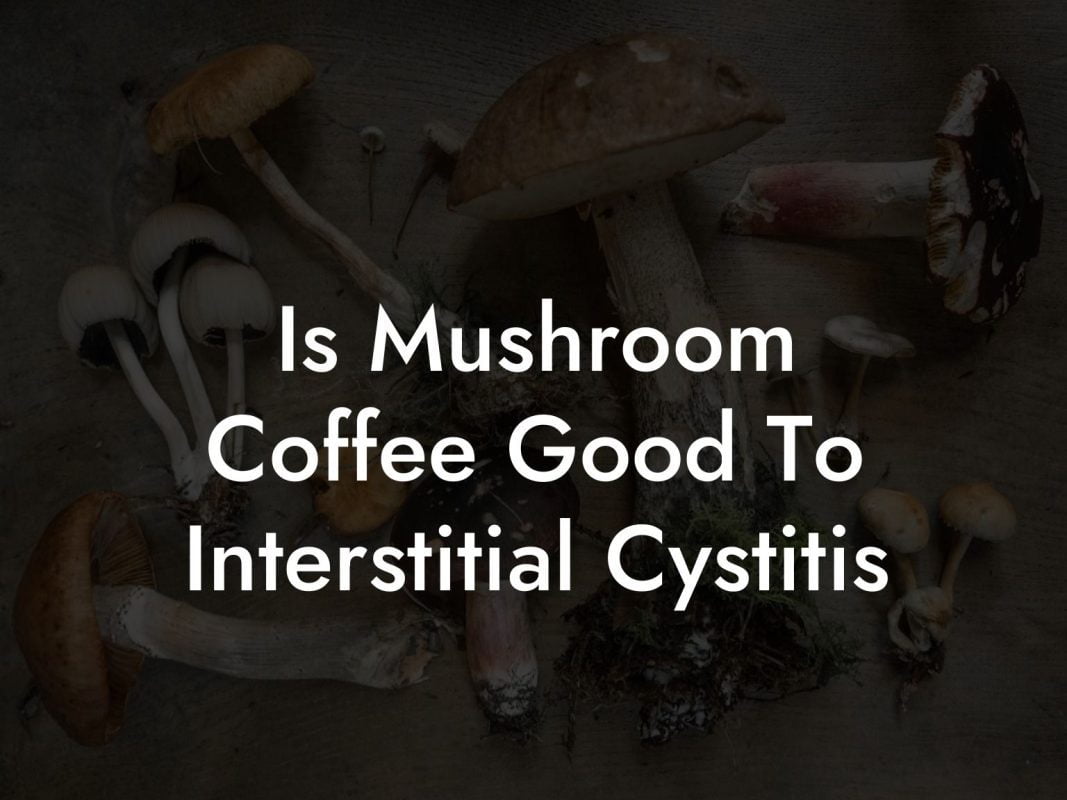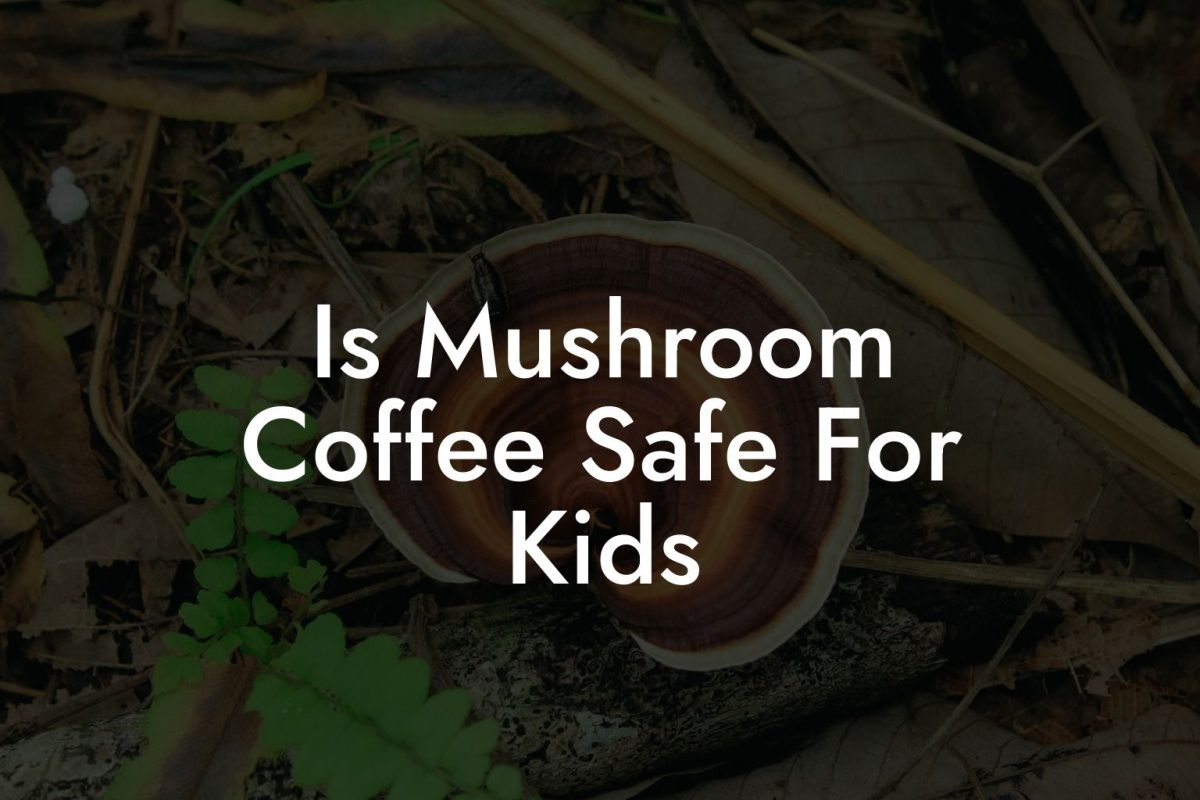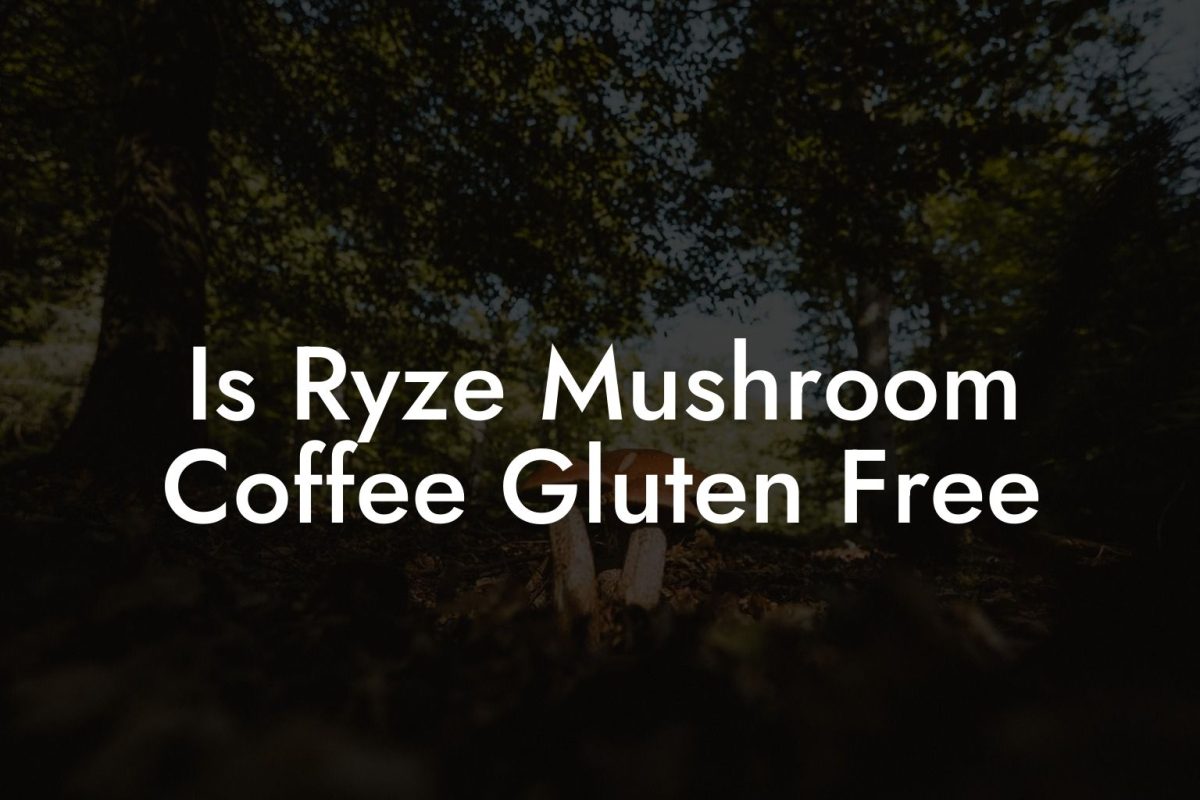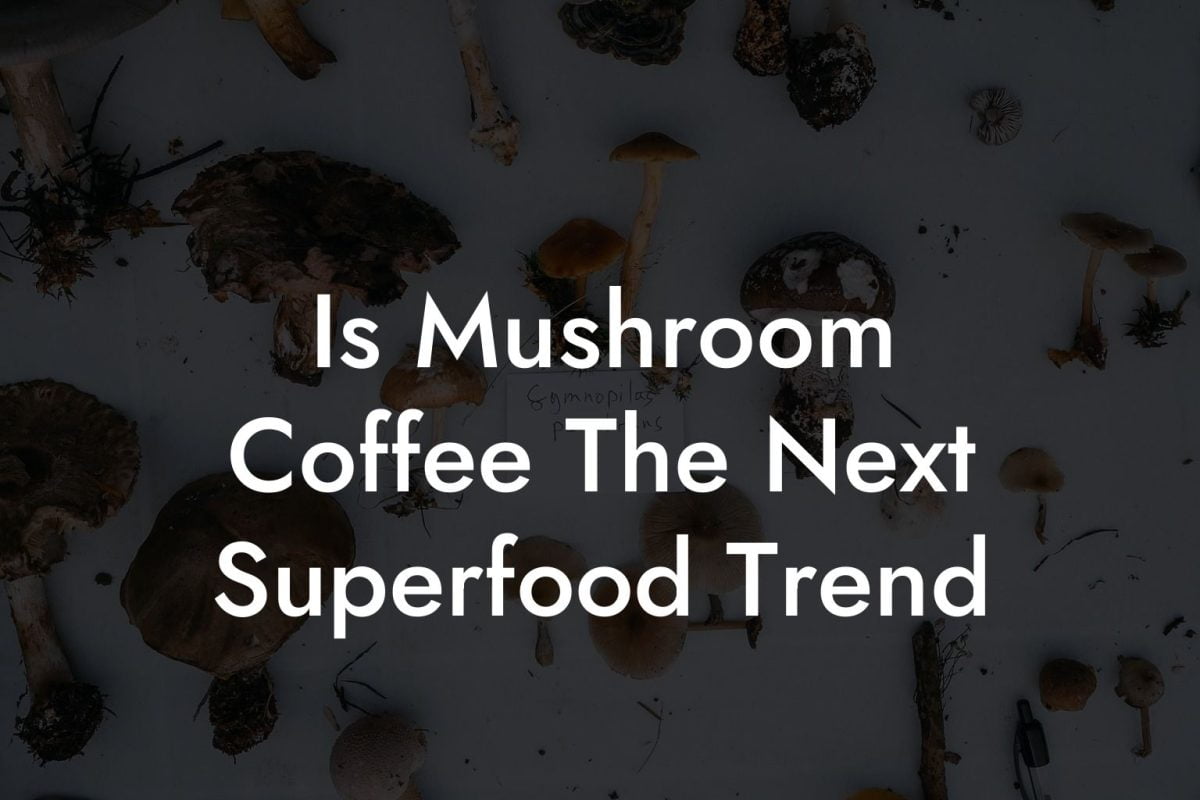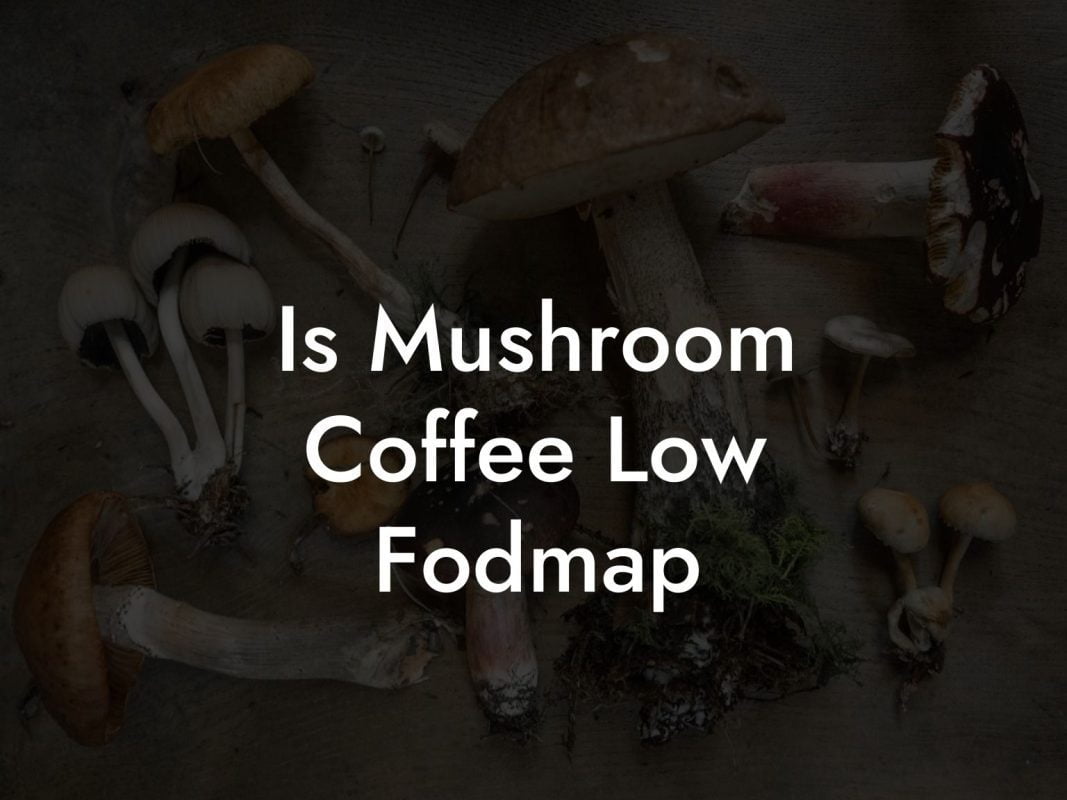Ever thought your leftover coffee grounds could do more than just clog your drain? Picture this: a cozy, eco-friendly revolution brewing in your kitchen, where discarded coffee grounds transform into a fertile playground for mushrooms. Welcome to the wild, organic world of growing mushrooms in coffee grounds, a sustainable, innovative, and downright cool way to harness nature’s recycling superpower. Whether you’re a Gen-Z trendsetter or an eco-conscious millennial with an eye for all things “mushroom coffee,” this guide will take you on a hilarious yet informative journey into the art and science of fungus cultivation.
Quick Links to Useful Sections
- Understanding the Fungal Phenomenon: What’s the Deal with Mushrooms?
- The Science Behind the Brew: Coffee Grounds as a Fungal Goldmine
- Cultivating Your Fungi: A Step-by-Step Guide to Growing Mushrooms in Coffee Grounds
- Step 1: Gather Your Materials
- Step 2: Prepare the Coffee Grounds
- Step 3: Inoculation Time
- Step 4: Incubation
- Step 5: Fruiting Phase
- Step 6: Harvest and Enjoy
- The Benefits of Growing Mushrooms in Coffee Grounds: More Than Just a Novelty
- Mushroom Coffee: Brewing Up a Storm of Health and Flavor
- Getting Creative: Unique Variations and Flavor Hacks
- Troubleshooting 101: Overcoming Common Hurdles in Coffee Ground Cultivation
- Contamination Concerns
- Moisture Matters
- Temperature Tweaks
- Air Circulation
- Integrative Case Studies: Real-Life Tales from Mushroom Mavericks
- The Urban Farmer
- The Eco-Warrior
- The Health Guru
- The Road to a Healthier You: Health Benefits of Mushroom Coffee and Beyond
- Getting Social: Resources and Community Support – Your Next Steps
- Beyond the Brew: Exploring the Multifaceted World of Coffee Grounds in Cultivation
- Innovative Tips for the Modern Cultivator
- Expanding Your Fungal Horizons: Advanced Techniques and Futuristic Ideas
- Mushroom Myths and Facts: Busting Common Misconceptions
- Mushroom Coffee Innovations: Merging Health, Sustainability, and Flavor
- Integrative and Holistic Approaches FAQs: Your Questions Answered
- Your Journey into the World of Coffee Ground Fungi: The Ultimate Invitation
Understanding the Fungal Phenomenon: What’s the Deal with Mushrooms?
When we talk about mushrooms, we’re not just talking about the humble fungi that occasionally crash your pizza party. We’re diving into a fascinating realm where mushrooms not only serve as a nutritious food source but also provide a sustainable solution for repurposing spent coffee grounds. Growing mushrooms in coffee grounds isn’t just a quirky DIY project, it’s a movement that intersects sustainability, creativity, and wellness.
So why mushrooms? For starters, mushrooms are natural recyclers. They thrive in environments rich in organic matter. Coffee grounds, loaded with nitrogen and other key nutrients, provide an ideal substrate. In fact, mushrooms such as oyster mushrooms (Pleurotus ostreatus) and shiitake (Lentinula edodes) have been proven to flourish on coffee grounds, turning everyday waste into a gourmet delight. And if that isn’t cool enough, the resulting harvest can even be used to make an energizing and health-boosting mushroom coffee blend.
This sustainable technique not only recycles your coffee waste but also offers a new farming method that aligns with eco-friendly practices. It’s like giving your morning brew a second life, one that’s brimming with flavor, nutrition, and a dash of environmental karma.
The Science Behind the Brew: Coffee Grounds as a Fungal Goldmine
Let’s get a bit science-y (in a fun way, we promise!). The reason coffee grounds are a hit with mushrooms comes down to their chemical composition. Freshly brewed coffee grounds are acidic and packed with nutrients like nitrogen, phosphorus, potassium, and organic compounds. These nutrients create a hospitable environment for the mycelium, the root-like network that forms the backbone of any mushroom.
Looking For The Best Mushroom Coffee? You'll Love These:
Think of the mycelium as the unsung hero in your coffee grounds’ second act. When you mix in a mushroom spawn (a kind of fungal starter), the mycelium gets to work, breaking down the coffee substrate with the help of enzymes. This process releases sugars and other compounds that provide energy for the growth of fruiting bodies, those are the mushrooms you eventually harvest.
Moreover, the porous nature of used coffee grounds means they retain moisture well, ensuring a consistently humid environment that mushrooms adore. And since the coffee grounds are already pasteurized by the hot water during brewing, it minimizes the risk of contamination. In essence, you’re creating a nutrient-rich, low-maintenance ecosystem that’s perfectly tailored for a fungal fiesta.
Cultivating Your Fungi: A Step-by-Step Guide to Growing Mushrooms in Coffee Grounds
Ready to roll up your sleeves and join the mushroom revolution? Here’s a laid-back yet detailed guide to transform your coffee waste into an edible masterpiece:
Step 1: Gather Your Materials
Before you jump into your coffee-fueled fungus farm, assemble your tools:
- Used Coffee Grounds: Collect fresh, used coffee grounds from your morning brew, about 2-3 cups should get you started.
- Mushroom Spawn: Oyster mushrooms are the superstar here, but feel free to experiment with shiitake or other varieties.
- Growing Container: This can be a plastic bag, a bucket, or even a repurposed container. Ensure it’s clean and can retain humidity.
- Water Spray Bottle: For maintaining the necessary moisture level.
- Protective Gear: While not mandatory, gloves and a mask can help reduce contamination and keep things hygienic.
Step 2: Prepare the Coffee Grounds
Freshly used coffee grounds should be cooled to room temperature. If you’re collecting them from a local café, ask for grounds that haven’t been sitting around for too long to avoid contamination. Give them a quick stir to ensure they’re evenly moist, damp, but not drenched.
Step 3: Inoculation Time
It’s time to introduce the mushroom spawn to your coffee grounds. Spread the spawn over the surface of the grounds and mix it in gently with a spatula (or your hands if you’re feeling adventurous). The goal here is to distribute the spawn evenly so that the mycelium can colonize the substrate uniformly.
Step 4: Incubation
Transfer your inoculated mixture into your container. Seal the container loosely to maintain high humidity while allowing for some air exchange, mushrooms like a bit of fresh air, just like you. Store the container in a dark, warm spot (around 70-75°F or 21-24°C) and keep an eye on the humidity. Within 7-14 days, you should start seeing white mycelium spreading through the substrate, your very own fungal web!
Step 5: Fruiting Phase
Once the container is fully colonized, it’s time for the mushrooms to take center stage. Move the container to a spot with indirect light and lower the temperature slightly if needed. Increase ventilation and mist the substrate with water to trigger the fruiting phase. In as little as 5-7 days, you should notice small pins (baby mushrooms) forming. With proper care, these pins will blossom into larger, ready-to-harvest mushrooms.
Step 6: Harvest and Enjoy
Harvest your mushrooms once they reach the desired size. Use a sharp knife or simply twist them off at the base. Enjoy your harvest in your favorite recipes, or – if you’re daring – blend them into the ever-popular mushroom coffee brew!
It might sound like a lot, but once you’ve done it a few times, you’ll be a pro at this eco-friendly, experimental farming venture. And remember, every misstep is just another step toward mastering the art of fungal cultivation.
The Benefits of Growing Mushrooms in Coffee Grounds: More Than Just a Novelty
Growing mushrooms in coffee grounds isn’t just a quirky kitchen experiment, it’s a win-win scenario for you and the environment. Here are some standout benefits that may just have you ditching conventional farming methods in favor of this sustainable alternative:
- Waste Reduction: Transforming used coffee grounds into a growing medium minimizes waste and supports a circular economy. Instead of tossing those spent coffee grounds into the trash, you’re repurposing them into something delicious and nutritious.
- Sustainability: Using coffee grounds as a substrate reduces the need for traditional, resource-intensive growing media. This method is especially appealing to eco-conscious individuals who care about reducing their carbon footprint.
- Cost-Effective: Coffee grounds are essentially free, a by-product of your daily caffeine fix. Pair that with relatively inexpensive mushroom spawn, and you’ve got yourself an affordable way to produce gourmet mushrooms at home.
- Health Benefits: Edible mushrooms are nutritional powerhouses, loaded with vitamins, minerals, and antioxidants. When blended into mushroom coffee, they offer a unique combination of caffeine and natural compounds that may aid immunity, stress reduction, and overall well-being.
- Easy and Fun: Cultivating mushrooms can be a meditative and rewarding process. Whether you’re looking to experiment in the kitchen or simply enjoy a new hobby, growing mushrooms in coffee grounds offers a satisfying, hands-on experience.
In essence, this method epitomizes the “waste not, want not” mindset. It’s a sustainable, innovative, and downright trendy approach to recycling that fits perfectly with the values of forward-thinking millennials and Gen-Z eco-warriors.
Mushroom Coffee: Brewing Up a Storm of Health and Flavor
One of the coolest offshoots of growing mushrooms in coffee grounds is the emergence of mushroom coffee, a beverage that marries the robust flavor of coffee with the subtle, earthy tones of mushrooms. But what exactly is mushroom coffee, and why is it creating such a buzz in health circles?
Mushroom coffee isn’t your average cup of joe. By infusing the brew with medicinal mushrooms such as lion’s mane, reishi, and chaga, enthusiasts claim it boosts cognitive function, enhances focus, and provides a gentle energy lift without the jitters often associated with traditional coffee. Plus, the bioactive compounds in these mushrooms are believed to support immune function and reduce inflammation.
Imagine sipping a warm cup of coffee that not only perks you up in the morning but also helps keep your body balanced and resilient throughout the day. It’s like having your cake and eating it too, but way healthier and with a lot less guilt!
Whether you blend your home-grown mushrooms into a fine powder or purchase premium extracts, mushroom coffee is a burgeoning trend that speaks to the modern desire for functional foods backed by nature’s own remedies. It’s a fusion of tradition and innovation, ideal for those who believe that wellness can be as delicious as it is beneficial.
Getting Creative: Unique Variations and Flavor Hacks
Tired of the same old latte? If you’re feeling inventive, using mushrooms grown in coffee grounds can lead to some seriously dope culinary experiments. Beyond just mushroom coffee, why not try:
- Mushroom-Infused Broth: Use your harvested mushrooms to craft a savory broth for soups and stews. Their umami flavor adds depth to your dishes and makes every meal feel like a five-star experience.
- Gourmet Toast Toppings: Sauté mushrooms with garlic, turmeric, and a drizzle of olive oil, then spread the mixture on whole-grain toast for an elevated snack or light meal.
- Plant-Based Protein: Blend your mushrooms into a sauce or dip that can be used on salads, grain bowls, or vegan wraps, boosting your meal’s nutritional profile while keeping it flavor-packed.
- Fungi Fun in Smoothies: For the adventurous, a small amount of mushroom extract can be mixed into your morning smoothie, combining the benefits of antioxidants with a subtle, earthy flavor.
The key here is experimentation. Let your taste buds lead the way, and don’t be afraid to mix and match. The world of fungal cuisine is as vast and varied as your imagination, and as sustainable as that bag of coffee grounds waiting in your bin.
Troubleshooting 101: Overcoming Common Hurdles in Coffee Ground Cultivation
Like any DIY project, growing mushrooms in coffee grounds isn’t always a smooth ride. To keep your venture thriving, here are some common hiccups and how to troubleshoot them like a pro:
Contamination Concerns
Since coffee grounds can attract unwanted bacteria or mold, cleanliness is essential. Always disinfect your tools and use fresh, uncontaminated coffee grounds. If you spot strange colors on your substrate that aren’t the desired white mycelium, it might be time to start over.
Moisture Matters
Too much moisture can lead to soggy, smelly substrate, while too little can stunt growth. Aim for a damp environment by misting your setup regularly but avoid over-saturation. The substrate should feel like a sponge that’s been wrung out.
Temperature Tweaks
Mushrooms love a stable environment. If your space is too cold or too warm, the mycelium may slow down or stop growing entirely. Maintaining an incubation temperature between 70-75°F (21-24°C) normally does the trick. A simple thermometer can be your best friend here.
Air Circulation
While humidity is key, stale air is not. Ensuring proper ventilation without drying out your substrate is a balancing act. Loosely cover your container to allow for air exchange while retaining enough moisture for your mushroom friends to thrive.
With a bit of practice and patience, troubleshooting will become second nature. Remember, every misstep is an opportunity to learn something new about the fascinating world of fungi.
Integrative Case Studies: Real-Life Tales from Mushroom Mavericks
Sometimes the best inspiration comes from hearing about other’s successes (and hilarious misadventures). Let’s dive into a few real-life stories from pioneers who’ve embraced the art of growing mushrooms in coffee grounds:
The Urban Farmer
Meet Alexa, a city-dwelling barista turned urban farmer, who transformed her local coffee shop’s waste into an urban mushroom oasis. With a DIY setup in her tiny apartment, she cultivated a steady harvest of oyster mushrooms, which she then incorporated into her popular plant-based dishes, and even sold as artisanal mushroom coffee at weekend markets. Alexa’s journey shows that even in a concrete jungle, sustainable living is well within reach.
The Eco-Warrior
Jordan, an eco-blogger from Portland, was determined to prove that sustainability doesn’t have to break the bank. Collecting coffee grounds from various cafes, he experimented with different mushroom strains, eventually discovering that shiitake and oyster mushrooms were perfect match-ups for his substrate. His blog exploded with fans sharing their own successes, igniting a community movement around coffee ground cultivation.
The Health Guru
Then there’s Taylor, a wellness enthusiast and self-proclaimed “fungi fanatic.” Taylor was intrigued by the potential health benefits of mushroom coffee, and started growing mushrooms at home to experiment with different blends. Over time, Taylor’s experiments culminated in a signature mushroom coffee recipe that promised a boost in immunity, enhanced focus, and a gentle, sustained energy lift. Taylor’s blend soon became a local hit among like-minded millennials seeking a healthier way to enjoy their caffeine fix.
These case studies are more than just feel-good stories, they’re a reminder that with a bit of creativity and persistence, you too can join the ranks of mushroom mavericks making sustainability and health a lifestyle.
The Road to a Healthier You: Health Benefits of Mushroom Coffee and Beyond
Beyond the sheer cool factor of growing mushrooms in coffee grounds, there’s a compelling case to be made for the health perks of this practice. Mushroom coffee, enriched with the naturally occurring bioactive compounds from mushrooms, offers a unique twist on your average cup of java. Let’s take a closer look at why incorporating mushrooms into your coffee routine might just transform your mornings:
- Enhanced Immunity: Many medicinal mushrooms, such as reishi and chaga, are renowned for their immune-boosting properties. These compounds help your body fend off everyday invaders, keeping you in peak productive mode.
- Improved Cognitive Function: Lion’s mane mushroom has been studied for its potential to promote nerve growth factor (NGF), which supports brain health. A cup of mushroom coffee might be just what your brain needs to level up your focus during long study sessions or important meetings.
- Sustained Energy: Unlike the jittery spikes often experienced with traditional coffee, mushroom coffee delivers a more balanced energy release. This helps you maintain focus and productivity without the dreaded post-caffeine crash.
- Antioxidant Power: Mushrooms are packed with antioxidants, which help combat oxidative stress. This can lead to improved skin, reduced inflammation, and overall better health.
- Mind-Body Harmony: The act of growing your own mushrooms and then incorporating them into your daily routine can provide a unique sense of mindfulness and satisfaction, an essential component of wellness in our fast-paced modern lives.
By integrating the health benefits of mushrooms with the robust flavor and energy of coffee, you’re not just making a beverage, you’re creating a holistic ritual that nurtures both body and mind.
Getting Social: Resources and Community Support – Your Next Steps
Venturing into the world of mushroom cultivation and mushroom coffee is an adventure best shared with fellow enthusiasts. There are countless online communities, local eco-groups, and social media influencers who are buzzing with tips, recipes, and inspiring stories about sustainable practices.
To get started, consider joining forums and Facebook groups that focus on urban farming, sustainable living, or specific mushroom cultivation techniques. Platforms like Reddit and Instagram are alight with hashtags such as #MushroomCoffee, #GrowYourOwnMushrooms, and #FungiFarming, offering a treasure trove of DIY tutorials and community support.
Local co-ops, community gardens, and even coffee shops in your area might be open to sharing their surplus coffee grounds or collaborating on workshops. These communities not only offer practical advice but also the motivation you need to innovate and experiment.
Embrace the learning curve and remember that every challenge encountered on this sustainable journey is an opportunity for growth. Share your triumphs (and your hilarious fails) on social media, and be sure to tag your posts with #MushroomRevolution to connect with a global community of like-minded trailblazers.
Your next steps? Research, experiment, and engage. The world of coffee ground mushroom cultivation is wide open, brimming with potential for personal growth, community building, and even a bit of environmental activism. Trust your instincts, follow the guidance of fellow cultivators, and watch as your kitchen turns into a mini fungal farm, all while making a positive impact on the planet.
Beyond the Brew: Exploring the Multifaceted World of Coffee Grounds in Cultivation
While our adventure so far has centered on mushrooms and mushroom coffee, coffee grounds boast an impressive array of uses in the broader scope of sustainable gardening and DIY projects. They can be incorporated as a soil amendment in your garden, act as a natural pest deterrent, or even be repurposed into stimulating compost for your houseplants.
By embracing coffee grounds as a versatile resource, you’re tapping into a world of regenerative practices that celebrate waste reduction and creative innovation. Think of it as a full-circle moment: the very thing that once jump-started your day as a hot, aromatic brew is now the catalyst for a green, thriving ecosystem in your home. This eco-friendly approach aligns perfectly with the values of modern sustainability advocates and offers endless opportunities for experimentation.
Whether you’re using coffee grounds to grow mushrooms, enhance your garden soil, or create natural deodorizing scrubs, every application serves as a reminder that what we often discard can be transformed into something incredibly valuable. So, challenge the norm, embrace innovation, and let your leftover coffee grounds spark a creative, sustainable revolution.
Innovative Tips for the Modern Cultivator
In the spirit of sharing insider secrets with our fellow fungal aficionados, here are some cutting-edge tips that blend practicality and creativity:
- Experiment with Blends: Don’t be afraid to mix coffee grounds with other organic substrates such as straw or sawdust to create a hybrid medium that can support a wider variety of mushrooms.
- Track Your Progress Digitally: Use a simple journal or a digital spreadsheet to log temperature, humidity levels, and growth stages. This data can help fine-tune your conditions for future harvests.
- DIY Temperature Control: If your growing area is prone to temperature fluctuations, consider inexpensive solutions like insulating wraps or even a mini heat mat to keep conditions steady.
- Host a Fungi Fête: Invite friends over for a “mushroom coffee tasting” party. Share your knowledge, swap coffee grounds tips, and celebrate your sustainable creations with delicious recipes and good vibes.
- Customize Your Setup: Whether you’re using repurposed containers from thrift stores or designing a dedicated growing station, let your personal style shine through. A well-organized, aesthetically pleasing setup can be both motivating and Instagram-worthy.
These tips are not only practical for boosting your yields, but they also weave together the innovative spirit of modern DIY culture with the timeless rhythms of nature. After all, who said sustainability can’t be fun, stylish, and downright creative?
Expanding Your Fungal Horizons: Advanced Techniques and Futuristic Ideas
For those of you who have mastered the basics and are ready to level up your game, consider exploring some advanced techniques. Imagine integrating automated humidity sensors, custom-built microclimate pods, or even collaborating with tech-savvy friends to monitor your mushroom beds remotely. By blending the best of traditional fungus cultivation with futuristic technology, you can achieve optimum conditions that maximize yield and consistency.
Additionally, keep an eye on emerging research on the bioactive compounds in mushrooms, which could eventually lead to novel culinary applications or even wellness products tailor-made for the Gen-Z lifestyle. Experiment with medicinal mushroom extracts, infusions in smoothies, or even as natural additives in your skincare routine. The possibilities are as vast as the mycelium networks spreading beneath your coffee grounds.
Harnessing technology not only streamlines the cultivation process but also opens up avenues for scientific exploration and creative expression. Embrace your inner biohacker, and let your kitchen evolve into a mini-laboratory where sustainability meets innovation.
Mushroom Myths and Facts: Busting Common Misconceptions
With any trend that turns the heads of enthusiastic DIYers and eco-conscious millennials, myths and misconceptions tend to follow. Let’s clear the air with some candid, no-nonsense truths:
- Myth: Coffee grounds are too acidic for mushrooms. Fact: Although coffee grounds are acidic, used grounds quickly balance out to an optimal pH level when mixed with other organic matter, making them just right for many mushroom species.
- Myth: Only oyster mushrooms thrive on coffee grounds. Fact: While oyster mushrooms are particularly well-suited due to their aggressive colonization, other varieties such as shiitake can also flourish with minor adjustments.
- Myth: Growing mushrooms is overly complicated and time-consuming. Fact: With proper sanitation and the right conditions, mushroom cultivation can be a streamlined, repetitive process that fits effortlessly into a busy lifestyle.
- Myth: Mushroom coffee tastes earthy and bitter. Fact: When prepared correctly, mushroom coffee offers a balanced, smooth flavor profile that complements the natural robustness of regular coffee while providing a gentle energy lift.
Dispelling these myths is key to unlocking the full potential of your eco-friendly mushroom journey. Knowledge is power, and with the facts in hand, you’re well-equipped to experiment boldly and innovate in the realm of coffee ground cultivation.
Mushroom Coffee Innovations: Merging Health, Sustainability, and Flavor
As the trend of mushroom coffee continues to gain traction, innovators across the globe are experimenting with new recipes and brewing methods. Imagine pairing the robust aroma of freshly roasted coffee with the subtle earthiness of mushrooms, enhanced further by natural sweeteners and spices. The result is a sophisticated, health-boosting beverage that’s perfect for your morning ritual.
Some creative variations include:
- Vanilla-Chai Mushroom Coffee: A blend of spicy chai tea, smooth vanilla, and enriched mushroom extracts, ideal for those who crave an aromatic twist on their daily brew.
- Cold Brew with a Fungi Twist: Perfect for summer, this refreshing cold brew combines cold-infused coffee, a hint of mushroom essence, and natural sweeteners for a revitalizing sip.
- Choco-Mushroom Delight: A dessert-inspired coffee drink with cocoa, a dash of cinnamon, and mushroom powder, creating a complex, layered flavor experience.
These creative blends are just the tip of the iceberg. Whether you’re a seasoned coffee connoisseur or a curious newcomer, mushroom coffee opens up a world where sustainability meets gourmet innovation in every cup.
Integrative and Holistic Approaches FAQs: Your Questions Answered
Here are some frequently asked questions that address common concerns about growing mushrooms in coffee grounds and the art of mushroom coffee:
1. What makes coffee grounds a good medium for growing mushrooms?
Coffee grounds are rich in nutrients, especially nitrogen, and retain moisture well, creating an ideal environment for the mycelium to colonize and eventually produce mushrooms.
2. Which mushroom varieties thrive on coffee grounds?
Oyster mushrooms are the most popular due to their aggressive colonization, but shiitake and other medicinal varieties can also be grown with some adjustments.
3. Can I use spent coffee grounds from any type of coffee?
Yes, as long as the coffee grounds are fresh and free from chemical additives, any used coffee grounds can serve as a viable growing substrate.
4. How long does it take to harvest mushrooms grown on coffee grounds?
Typically, you can expect to see results in about 2-3 weeks from inoculation to fruiting, though this timeline can vary based on environmental conditions.
5. What are the key health benefits of mushroom coffee?
Mushroom coffee is celebrated for its potential to boost immunity, enhance cognitive function, provide sustained energy, and offer antioxidant benefits, all without the jittery side effects of regular coffee.
6. How do I ensure my mushroom cultivation isn’t contaminated?
Practice good hygiene: use fresh coffee grounds, sanitize your tools, and maintain proper moisture and temperature levels to minimize the risk of contamination.
7. Can I use coffee grounds from my home coffee maker?
Absolutely! In fact, using your home-brewed coffee grounds is both convenient and sustainable. Just ensure they’ve cooled to room temperature before use.
8. Are there any special storage tips for my mushroom yield?
Fresh mushrooms should be stored in a paper bag in the refrigerator and consumed within a week for optimal freshness and flavor.
9. How do I incorporate harvested mushrooms into a coffee blend?
You can dry and grind your mushrooms into a fine powder, then mix a small amount with your coffee grounds before brewing to create a harmonious blend of flavors.
10. What resources are available for beginners in mushroom cultivation?
There are plenty of online tutorials, community forums, and local workshops dedicated to sustainable fungal horticulture. Engaging with these communities can provide valuable insights and practical tips.
Your Journey into the World of Coffee Ground Fungi: The Ultimate Invitation
From repurposing your everyday coffee waste into a vibrant fungal oasis to brewing a health-boosting cup of mushroom coffee, the possibilities are endless when you embrace the creative power of nature. This journey isn’t just about cultivating mushrooms, it’s about cultivating a lifestyle that’s innovative, sustainable, and uniquely you.
Every batch of coffee grounds holds the promise of transformation. What once fueled your mornings as a simple caffeine fix now holds the potential for lush, thriving mushroom gardens and a new era of eco-friendly, holistic health practices. As you experiment, learn from your successes and your missteps, and engage with a community of fellow mushroom aficionados, you’re also joining a broader movement that celebrates sustainability, creativity, and mindful consumption.
Embrace the challenge, enjoy the process, and let your kitchen become a canvas for sustainable innovation. The art of growing mushrooms in coffee grounds is as much about reconnecting with nature as it is about redefining modern living, a harmonious blend of health, taste, and environmental responsibility.
So, what are you waiting for? Dive in, experiment boldly, and savor every moment of your journey toward an eco-friendly, innovative future. Your adventure in fungal cultivation is just beginning, and every cup of mushroom coffee you brew is a tribute to creativity, sustainability, and the endless possibilities of a resourceful mind.
Looking For The Best Mushroom Coffee? You'll Love These:
Useful Interruption: Dive deeper into the world of Mushroom Coffee with our most popular sections. If there is anything you think is missing or anything you would love for us to write about, just give us a shout.
- Mushroom Coffee Equipment & Product Reviews
- Mushroom Coffee Recipes & Creative Variations
- Mushroom Coffee Guides & Troubleshooting
- Mushroom Coffee Brewing & Preparation Techniques
- Model Rocket Advanced Rocketry & Innovations
- Mushroom Coffee Fundamentals
- Model Rocket Equipment Reviews & Digital Tools
- Mushroom Coffee Health Benefits & Wellness
- Mushroom Coffee Mycology & Scientific Insights
- Mushroom Coffee Community, Lifestyle & Engagement
I tried mushroom coffee this morning and told my friend, "This brew is spore-tacular!" He shot back, "Guess that's why it's such a cap-tivating way to kickstart your day!"

